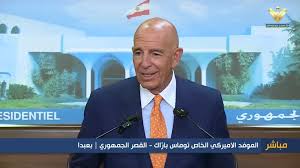It’s still unclear what prompted US President Trump to order the Commander of Quds Force in Iran’s IRGC General Qassem Suleimani on January 3. Members of Congress say they haven’t been show evidence that Suleimani presented an “imminent” threat.
Secretary of State Mike Pompeo has suggested “imminent” might not be the right word, and on Sunday, Defense Secretary Mark Esper and National Security Adviser Robert O’Brien walked back Trump’s assertion that US intelligence predicted Suleimani had planned to attack four US embassies.
However, the killing of Suleimani was not a new idea, The Washington Post reported Sunday, adding that it was first brought up in the spring of 2017, at the start of Trump’s presidency.
He revived the idea “several times again in the months and years to follow,” according to the paper.
It quoted former White House officials as saying that Esper’s predecessor, retired Gen. James Mattis, “resisted any action” on Suleimani and probably “wouldn’t have presented the option to the president.”
According to The New York Times, Esper and Trump’s new national security team presented killing Suleimani as the “extreme” option and were shocked Trump chose it.
Mattis wasn’t alone in trying to check what he viewed as Trump’s rash impulses, the Post reported. It quoted one former senior administration official as saying that fellow retired Marine general John Kelly, then Trump’s chief of staff, “regularly told military officials that he wanted to talk to Trump before they actually carried out one of his orders and sometimes told them to hold off.”
The official explained that Trump would “get spun up, and if you bought some time, you could get him calmed down, and then explain to him what his decision might do.”
Trump initially passed on killing Soleimani in late December, opting instead for airstrikes that killed 25 fighters of Hashd Shaabi’s Kata’ib Hezbollah. But when Trump watched TV coverage of militia supporters attacking the perimeter of the massive US Embassy in Baghdad, “he’s thinking about Benghazi” and “he’s also thinking about the 1979 attack on the American Embassy in Iran that led to the hostage crisis,” the Times’ Helene Cooper said.
“He’s getting more and more angry, according to his aides, and then he calls for his menu of options again, and this time, he picks the extreme option,” killing Soleimani.
On TV Sunday, O’Brien explained Trump’s decision like this: “We made it very clear this was not going to be Tehran 1979, this was not going to be Benghazi.”
Source: Newspapers




